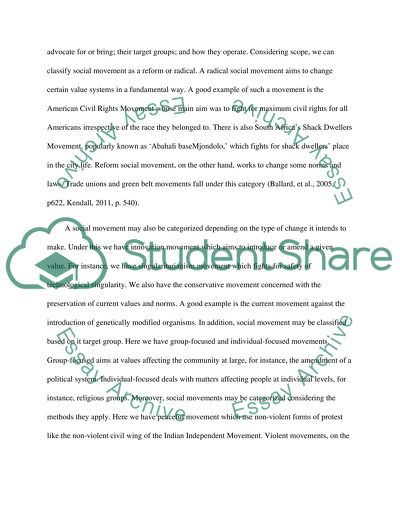Cite this document
(Key Characteristics of a Social Movement Essay Example | Topics and Well Written Essays - 1500 words, n.d.)
Key Characteristics of a Social Movement Essay Example | Topics and Well Written Essays - 1500 words. https://studentshare.org/social-science/1586468-what-are-the-key-characteristics-of-a-social-movement-use-examples-to-explain-any-theoretical-concepts-you-use
Key Characteristics of a Social Movement Essay Example | Topics and Well Written Essays - 1500 words. https://studentshare.org/social-science/1586468-what-are-the-key-characteristics-of-a-social-movement-use-examples-to-explain-any-theoretical-concepts-you-use
(Key Characteristics of a Social Movement Essay Example | Topics and Well Written Essays - 1500 Words)
Key Characteristics of a Social Movement Essay Example | Topics and Well Written Essays - 1500 Words. https://studentshare.org/social-science/1586468-what-are-the-key-characteristics-of-a-social-movement-use-examples-to-explain-any-theoretical-concepts-you-use.
Key Characteristics of a Social Movement Essay Example | Topics and Well Written Essays - 1500 Words. https://studentshare.org/social-science/1586468-what-are-the-key-characteristics-of-a-social-movement-use-examples-to-explain-any-theoretical-concepts-you-use.
“Key Characteristics of a Social Movement Essay Example | Topics and Well Written Essays - 1500 Words”. https://studentshare.org/social-science/1586468-what-are-the-key-characteristics-of-a-social-movement-use-examples-to-explain-any-theoretical-concepts-you-use.


